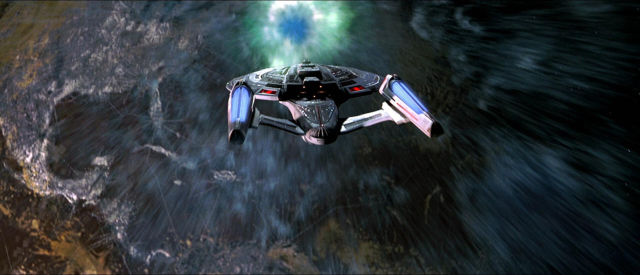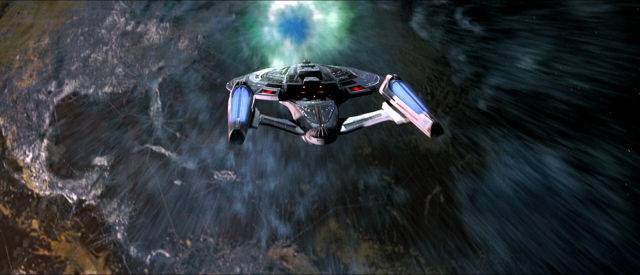
Enlarge / The Enterprise, caught in the wake of a temporal vortex, witnesses the Earth, assimilated long ago, in the altered timeline. (credit: Paramount Pictures)
A team of physicists has discovered that it’s possible to build a real, actual, physical warp drive and not break any known rules of physics. One caveat: the vessel doing the warping can’t exceed the speed of light, so you’re not going to get anywhere interesting any time soon. But this research still represents an important advance in our understanding of gravity.
Moving without motion
Einstein’s general theory of relativity is a toolkit for solving problems involving gravity that connects mass and energy with deformations in spacetime. In turn, those spacetime deformations instruct the mass and energy how to move. In almost all cases, physicists use the equations of relativity to figure out how a particular combination of objects will move. They have some physical scenario, like a planet orbiting a star or two black holes colliding, and they ask how those objects deform spacetime and what the subsequent evolution of the system should be.
But it’s also possible to run Einstein’s math in reverse by imagining some desired motion and asking what kind of spacetime deformation can make it possible. This is how the Mexican physicist Miguel Alcubierre discovered the physical basis for a warp drive—long a staple of the Star Trek franchise.
Read 15 remaining paragraphs | Comments
Ars Technica - All contentContinue reading/original-link]




